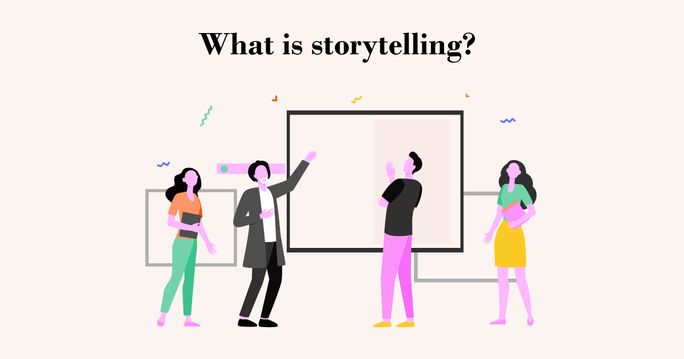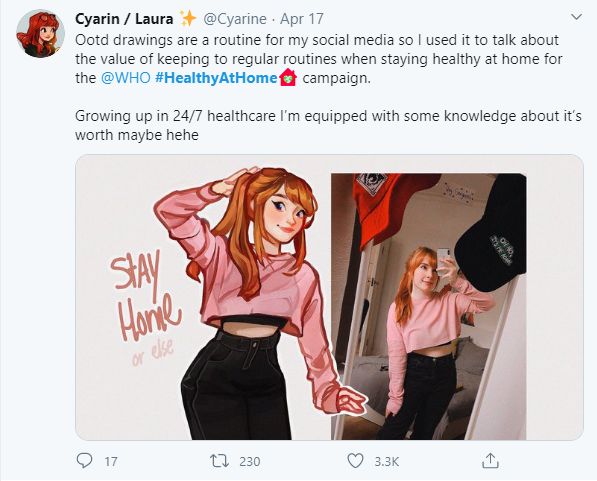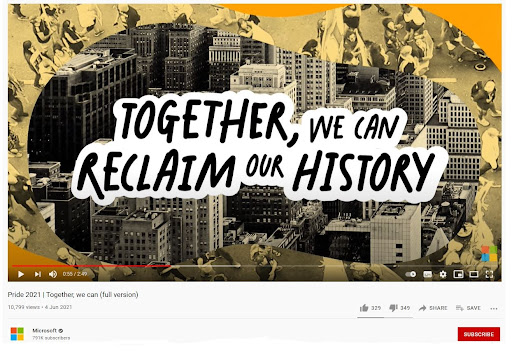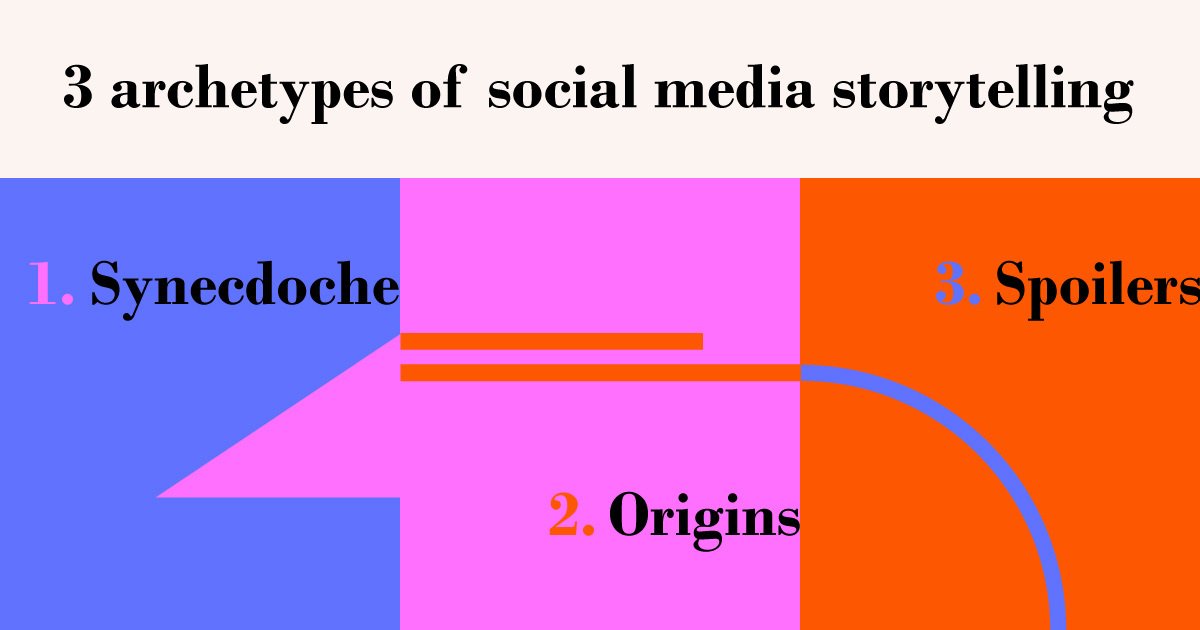Social media is an overwhelming content repository. Most of it is an emulation of others, shoving down the same information.
However, there is one way to make your content seem unique and rise above all. It is the storytelling approach that guarantees to etch your brand in your audiences’ minds.
Storytelling is one of the most captivating techniques to convey messages and information. If you want to be a true storyteller, create engaging stories that make people vigilant listeners. If utilized on social media, this can turn online audiences into your ardent followers.
In this blog, I shall talk about social media storytelling in specific and how to tap into it.
Ready?
Let the fun begin!
What is storytelling?

If you are a book lover, continually searching for new books and reading them is normal. But you must have one or some favorite authors that you will not hesitate to buy and read all of their pieces.
Those authors are already successful over the others in terms of captivating your interest and interactions. And surely, the reason is that they tell you good stories.
So, how can we define storytelling precisely? Is it the act of telling a story through a thousand words?
That’s just one side of it. The understanding lies in the fact that stories go beyond pieces of literature.
Stories, indeed, can not only be found in books. In reality, they are a universal language that everyone can use and understand. They appear in every form of communication like daily conversations, written papers, or blog posts online.
A story that can provoke a connection between people is at the heart of storytelling.
Here’s how we define “storytelling”:
Storytelling is the process of using facts and narratives to communicate and convey specific messages to the audience. Stories are revealed through words and actions with improvisation, theatrics, or embellishment.
It encourages the listener’s active imagination and involves a two-way interaction between a storyteller and one or more listeners.
However, one common characteristic of all forms of storytelling is that it empowers listeners to visualize vivid, sensory elements of the story based on the storyteller’s performance and their own experiences and understandings.
What is social media storytelling?
As mentioned earlier, stories come in forms beyond what you see in books or movies. And now, people are creating many stories on social media networks.
Someone posts a status on Facebook about how he became a successful marketer. Or a composer unfolds the story behind her latest song in a vlog on Youtube. Both of these cases are storytelling. More precisely, they’re social media storytelling.
Social media storytelling is the process of using social media platforms to tell stories about your brand, products, or whatever to captivate your audience.
Don’t assume that storytelling on social media is just another tactic to sell products or services. Instead, it enables you to expose your brand to your audience and tell them what it is all about.
We usually read stories that have specific characteristics, such as a beginning, middle, and an end with climax or conflict.
They typically convey some sort of moral lesson, thoughts, beliefs, or philosophy about the world and human beings. Storytelling, in social media marketing, is not an exception.
If you tell stories only to sell something, they will be more likely to be pushy promotions and slick sales messages. They are just boring hacks that usually don’t strike chord with the audience. They fail to engrave any special impression on their minds.
If you want a spellbinding example of storytelling, take a look at Google’s #StayHomeSaveLives campaign. Most of the people used this hashtag, staying at home and fighting against the pandemic together. Now, this wasn’t a unique campaign by Google.
However, the mighty search engine successfully bundled top searches in this challenging time into a heartwarming and inspiring story on social media.
It shows how people around the world are trying to help healthcare workers. It encourages people to stay quarantined and maintain social distancing to restrict the spread of Coronavirus.

Why is social media storytelling important?
Connecting with other people is one of the highest forms of communication. And good storytelling is the key to it. If you’re telling a story and another person is engaged in it, you two are in sync with each other.
Storytelling is the trigger of communication, and that’s why it’s so powerful.
Storytelling has psychological superpowers which make it a powerful marketing tool:
- Emotion: When you hear a story and feel a personal connection, which isn’t just theoretical; it’s based on some fascinating neuroscience facts. While hearing a story, many more areas of your brain activate and become engaged. That’s why it develops personal connections and creates deep emotional attachments better than facts.
- Action: The connection and emotion that stories arouse don’t just pull on our heartstrings; they can influence our behavior substantially. A series of experiments by the neuro-economist Paul Zak proved the fact. People who watched a video about an ill boy had higher levels of oxytocin in their brain that made them more inclined to donate money to a stranger.
- Value: Stories do elicit our emotions, sympathy, and actions. More than that, stories have a substantial influence on our perceiving the value of something. Brands can add more subjective value to their products with invented stories.
- Memory: Storytelling is embedded in our culture, engraved in our hearts, and thus, has a connection with our memory. It causes us to memorize things more clearly, so we remember them for a long time. It’s known as “The Story Method” of memorization.
How to do storytelling on social media platforms?
Stories allow us to build brands’ personalities and easily connect with customers. It seems to have so much to do with storytelling.
But how can we create good stories on social media that are the biggest playground for trendspotters? In addition to the limitations of social media posts on some channels, is it possible for storytellers to thrive on social media?
Don’t panic!
Here’re some ways to become a real storyteller on the four most popular social media platforms: Facebook, Instagram, Twitter, and YouTube.
Facebook storytelling
As Facebook doesn’t limit the number of words on a post, you can write an in-depth story. Instead of summarizing or just mentioning some key points, it’s better to write longer Facebook posts.
It works well if you want to captivate audiences with incredible stories rather than promoting a new product or driving traffic to another site.
A great example of Facebook storytelling is the Humans of New York Facebook Page. Their posts are quite long and require people to click “See more,” but they get significant engagement.

Instagram storytelling
Be a visual storyteller by making a visually appealing Instagram profile and portray an exciting story simultaneously.
You can refer to the famous ‘Rule of Thirds’ to ensure that your photo composition is correct and to the point. Use 3, 6, or 9 separated images or videos to create a completed huge one. It’s a creative way to give your Instagram profile a stunning look.
Let’s see how Moon think outside the box when they first introduced their brand with a bang:

Twitter storytelling
It’s a great idea to have your own hashtag that spreads your brand’s story. It enables you to collect other people’s stories in your community.
As long as your followers understand your purpose through the hashtag and use it in their tweets, your hashtag doesn’t have to be always trending. So use hashtags effectively with proper planning in your social media marketing.
The #HealthyAtHome hashtag got a lot of positive responses from the Twitter community.

YouTube storytelling
Did you know that 85% of internet users in the US watched video content monthly? No wonder, video is the future of marketing. It can capture people’s attention more than text content.
You can start with a series of videos about your company, employees, customers, or whatever content that you think will be interesting enough for viewers.
Your videos don’t need to be too long; keep them short but high-quality.
Here’s how Microsoft cherished the spirit of Pride as the Microsoft team spoke of LGBTQ+ support, giving them their rightful privileges.

5 tips and practices to optimize your social media storytelling campaign
Let’s discuss some of the best storytelling tips and practices you should adopt for a campaign success on social media.
Tip 1: Know your audience
Before writing a story, ask yourself, “Who are your listeners? Who will engage with it the most? You need to understand your audience to create a compelling story.
The best way to understand your audience is to identify customer personas. It’ll create a foundation for you to sell a story that resonates with your listeners, readers, or viewers.
Data and analytics will be your friends here! Check out your individual platform analytics, see how your posts perform.
Tip 2: Develop a “long” story
It’s essential to look at your business goals from short-term and long-term perspectives before developing your stories on social media.
To create a whole story of your business, individual stories should be illustrated in every format, including clips, social media posts, or images.
Once you realize that every piece of content you produce contributes to your brand story, you’ll want to get audiences involved for a prolonged period.
Tip 3: Write as a writer
Even if you have little or no background or experience in writing, you can still create a storyline that everyone would love to read.
Thinking about how to get attention? Write a creative, unique, and intriguing story to arouse a sense of curiosity in your audience.
Tip 4: Make your story meaningful
An interesting story might be enough for audiences to tap a “like.” But what makes them more inclined to engage and take action is a meaningful story.
When you tell a story that is deeply meaningful to the audience, it can provoke their emotions and build a strong connection with your brand.
So, before developing your story, figure out what is meaningful to your audience.
Tip 5: Leverage archetypes of social media storytelling

Here are the 3 types of social media storytelling techniques that garner the most attention:
- Synecdoche
It is the use of a part to represent the whole of something or vice versa. For example, Airbnb uses experiences and photos to tell its brand story. They add stories to customers’ pictures and post them on Facebook via posts and albums. It makes their experience more real and encourages more people to use Airbnb services. - Origins
It’s a classic way of telling brand stories. It means you include your audience in your story from the beginning. It’s better to actively interact with your audience and find what they need, what they want to read before writing your story. You’ll need to put a lot of effort and capacity into producing content that matches your audience’s interest. On an exchange, this archetype helps you create authentic conversations and drive valuable engagement.
- Spoilers
It is a quick summary of the surprise element or the climax of the story to intrigue the audience for a complete read. Remember that your audience is an integral part of your business. You can’t expect your story to be successful if it’s irrelevant to your audience.
In order to make the audience feel involved with your story and palpably see them as a part of it, create content that they can relate to, communicate with them on social media, update regularly, and share their stories, not just yours.
Conclusion
Storytelling is an art. It goes beyond a piece of paper with a beginning, middle, and end. There are many innovative ways for you to create unforgettable stories.
On social media, leverage the stories option to show sneak peeks of your everyday life hustle. Share videos of your customers sharing their stories and how your brand is a total game-changer in that.
You can have live sessions and partner with other people in your industry to share their life stories for inspiration. Most brands are even starting their weekly podcasts to connect with the story buffs.
Here’s a reminder, though. You can create endless valuable content, but you also need to ensure it gets maximum exposure. SocialPilot is that tool that will help you appear in the feeds of your active followers. Take its free trial to shoot up your engagement rate.





